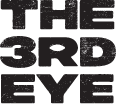What marketers should know about mental health awareness, how the definition of ‘wellness’ has changed and why quirky playful ads sustain connections with consumers.
Although mask mandates are being lifted, brands must continue to adapt to permanently changed consumer brands from the coronavirus, such as a new focus on mental health.
That was among the takeaways at this week’s Ad Age Next: Health and Wellness, which brought together executives in the health and wellness sector to discuss how their brands have changed in recent months. Topics included how marketers are working to turn exercise fads into long-term practices, evolving mental health and consumer sexual well-being trends, and how to interact with and build community among customers.
Below, four themes from Tuesday’s virtual event:
Mental health is taking center stage
Interest in mental health is rising, in part by how COVID affected people emotionally. This includes how employers are seeking to address what many have identified as “The Great Resignation.” Online therapy company Talkspace recently partnered with Kimpton Hotels and Restaurants to provide the brand’s employees and guests with a number of online mental health sessions for free.
Brands that don’t typically focus on mental health have also recognized it as integral to their goals. Cindy Gustafson, chief marketing officer of WW (formerly known as Weight Watchers), spoke about the increasing recognition that a weight loss journey is not just about what people put in their mouths. She framed weight loss instead as a “holistic wellness program” that puts “the importance of mental health” front and center. At-home rowing machine company Hydrow’s Chief Commercial Officer Gretchen Saegh-Fleming emphasized the mental, as well as the physical, benefits of the rowing exercise, which the company has dubbed “the hydrow high” in its advertising.
Sexual product manufacturer Satisfyer is reframing sex toys and masturbation as integral to wellness, rather than a separate activity. As a result, it’s positioning itself as a lifestyle brand, and “even shy[ing] away from calling them sex toys because they aren’t just for fun,” said Stephanie Trachtenberg, the brand’s director of marketing and PR for the Americas.
Closing the knowledge gap
When it comes to tampons, “the knowledge gap is astounding,” stemming from the lack of conversations and stigma around sex and the body, said Melissa Suk, Procter & Gamble VP of North America Tampax and Always. Tampax created a commercial with Amy Schumer that also serves as an educational resource around which tampon to use, and when.
Consumer education involves changing the broader conversation and overcoming censorship. Content involving women’s technology and sexual health are often automatically blocked by algorithms when it comes to online advertising, which affects brands including Elvie and Satisfyer, said their marketing leaders. Elvie recently launched an out-of-home campaign with giant inflatable breasts to normalize breastfeeding, said Aoife Nally, Elvie’s CMO.
Relatability and levity is key
Transparency and showing people “behind the scenes” was key to Pfizer’s marketing campaign, said Ed Harnaga, the brand’s SVP and head of external communications and enterprise reputation. But Pfizer also focused on injecting its campaigns with a “quirkiness” that was inspired by how people reacted to Pfizer on social media—including the so-called vaccine rivalries between Team Pfizer and other vaccine manufacturers that played out on TikTok.
Similarly, Hydrow had to address the intimidating image of rowing that is associated with Ivy League schools, whereas Peloton feels more approachable, said Ryan McDaid, group strategy director at Hydrow’s agency Mojo Supermarket. “We had to make this brand feel playful and approachable.”
After surveying consumers on what it means for them, the brand came to the concept of the “Hydrow high”—feeling like a clearer, better version of yourself. “It’s almost as if our community has taken it and run with it, and given it more life,” said Saegh-Fleming. The brand’s work with comedian Kevin Hart, who joined the team as Hydrow’s creative director in 2020, also helps bring “realness” to the brand, said Saegh-Fleming because the actor is not the typical tall overwhelmingly buff athlete. The approach is meant to position rowing as a habit-forming endeavor, said Saegh-Fleming. “If you keep people engaged and having fun while working out, they’re going to continue with the habit,” she said.
Online connections are still important, despite the return to real-life
Brands are still relying on online communities to get a feel for their consumers: Saegh-Fleming noted that Hydrow’s users are able to connect online, and WW’s Gustafson said that the platform’s online community within the app allows the brand to understand how its consumers are feeling and thinking.
When it comes to mental health, Talkspace also includes a texting feature that aims to appeal to younger generations, as well as to help people who might need immediate help outside business hours. While still using traditional media, The 3rd Eye, a creative agency that focuses on health and wellness, has established a presence on YouTube with videos about loneliness as well as Facebook exercise classes. This helps reach members of the boomer generation who have found themselves increasingly on these platforms, said the agency’s Chief Vision Officer and CEO Diana Brooks, partly for DIY help when outside companies couldn’t come to their homes during COVID as well as to help with loneliness. “We really saw an explosion” in the use of these platforms, said Brooks.
To increase engagement, Spotify has also partnered with food brands such as Barilla pasta to create playlists that last the length of time it takes to cook pasta. This stemmed from understanding how the pandemic widened the meaning of “wellness” to extend beyond fitness and into other areas such as mindfulness, said Spotify’s Director of Client Partnerships for CPG and Spirits Bryan Rotunno.



